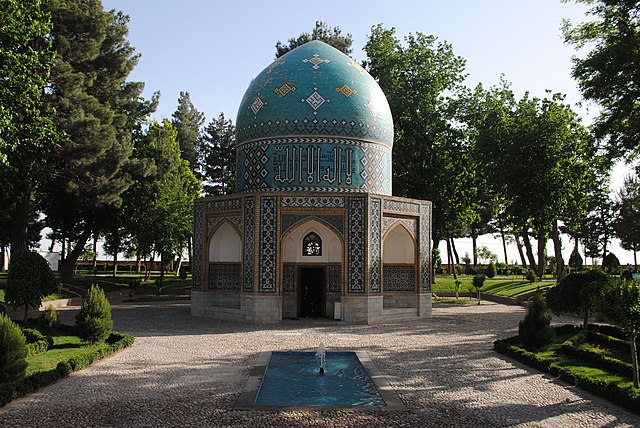Mongol invasion of Khorasan
The Mongol conquest of Khorasan took place in 1220-21, during the Mongol conquest of the Khwarazmian Empire. As the Khwarazmian Empire disintegrated after the capture of the large cities of Samarkand and Bukhara by the Mongol Empire, Shah Muhammad II fled westwards in the hope of gathering an army. Genghis Khan ordered two of his foremost generals, Subutai and Jebe, to follow the Shah and prevent any such Khwarazmian resurgence; meanwhile, he sent his youngest son Tolui south to subjugate any resistance.
The ruins of the Tomb of Ahmad Sanjar in Merv, a city which never recovered from the invasion.
The walls of the city of Merv, which never recovered from the Mongol conquests; the tomb of Ahmad Sanjar can be seen through a gap in the ruined fortifications.
The mausoleum of Attar of Nishapur, a Persian poet who was killed during the sack of Nishapur, was built during the Timurid Renaissance in the 15th century.
Siege of Samarkand (1220)
The siege of Samarkand (1220) took place in 1220 A.D. after Genghis Khan, founder of the Mongol Empire, had launched a multi-pronged invasion of the Khwarazmian Empire, ruled by Shah Muhammad II. The Mongols had laid siege to the border town of Otrar, but finding its defences obdurate, a large force commanded by Genghis and his youngest son Tolui detached from the vanguard and set off southwards, towards Transoxiana.
Equestrian battle in front of a city gate. Rashid ad-Din, Jami al-Tawarikh, 1300-1325



